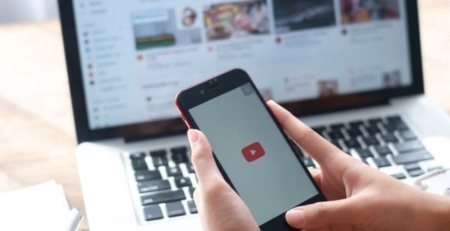QR Codes as a Powerful Marketing Tool: Success Stories and Best Practices
QR codes have evolved from a seemingly obscure technology to a ubiquitous marketing tool that bridges the gap between the physical and digital worlds. These two-dimensional codes have become instrumental in providing consumers with quick access to information, engaging experiences, and seamless interactions. In this blog, we will explore the success stories of businesses that have leveraged QR codes effectively in their marketing campaigns and discuss best practices for optimizing QR code implementation.
The Rise of QR Codes in Marketing
QR codes were invented in 1994 by Denso Wave, a subsidiary of Toyota, to improve efficiency in the automotive industry. However, it was not until the proliferation of smartphones that QR codes gained widespread consumer adoption. By simply scanning the code with a smartphone camera, users can access a wealth of information or trigger various actions.
The integration of QR codes in marketing campaigns took off rapidly, thanks to their versatility and cost-effectiveness. Here are some key reasons why QR codes became a powerful marketing tool:
Enhanced User Engagement
QR codes offer a seamless and interactive way for brands to engage with their target audience. By directing users to compelling content, promotions, or interactive experiences, QR codes foster a deeper connection between consumers and brands.
Real-Time Tracking and Analytics
Marketers can track QR code scans in real-time, allowing for instant feedback on the success of a campaign. This data-driven approach enables marketers to make informed decisions and optimize their strategies for better results.
Contactless Experiences
In the wake of the COVID-19 pandemic, QR codes gained additional traction as a contactless alternative for various interactions, such as digital menus at restaurants, touchless payments, and virtual events.
Success Stories of QR Code Marketing Campaigns
- Sephora’s Virtual Makeup Artist: Sephora, a renowned cosmetics retailer, integrated QR codes into their in-store displays. Customers could scan the codes to virtually try on different makeup products using augmented reality (AR) technology. This innovative approach significantly enhanced user engagement and increased the likelihood of making a purchase.
- Starbucks’ Digital Payment System: Starbucks revolutionized the coffee industry by introducing a QR code-based mobile payment system. Customers could load their Starbucks Card on their mobile app and pay by simply scanning the QR code at the counter. This strategy not only streamlined the payment process but also facilitated customer loyalty and rewards.
- Heinz’s Interactive Ketchup Bottles: Heinz launched a creative marketing campaign by replacing the back label of its ketchup bottles with a QR code. When scanned, the QR code directed users to a page featuring interactive recipes using Heinz ketchup. This campaign increased customer engagement and solidified brand loyalty.
- Coca-Cola’s Personalized Bottles: Coca-Cola’s “Share a Coke” campaign utilized QR codes on their personalized bottles. When scanned, the QR codes revealed special messages or directed users to a social media sharing platform, encouraging customers to engage with the brand and share their unique experiences.
Best Practices for QR Code Marketing
While QR codes offer numerous benefits for marketers, their successful implementation requires careful consideration and adherence to best practices. Here are some guidelines to optimize QR code marketing campaigns:
- Clear Call-to-Action (CTA): Always include a clear and concise CTA alongside the QR code to inform users about the value they will receive by scanning it. Whether it’s accessing exclusive content, availing discounts, or joining a loyalty program, the CTA should be compelling and actionable.
- Mobile-Optimized Landing Pages: Ensure that the destination page linked to the QR code is mobile-friendly and offers a seamless user experience. The content should be easily accessible and load quickly to avoid user frustration.
- Provide Value and Relevance: The content behind the QR code should offer genuine value to users. Consider providing exclusive offers, product information, educational resources, or entertaining experiences to motivate users to engage with the QR code.
- Test and Monitor Performance: Before launching a QR code campaign, conduct thorough testing across various devices and platforms to ensure compatibility. Continuously monitor QR code performance to analyze user behavior and make data-driven adjustments for better results.
- Integrate QR Codes Across Channels: Integrate QR codes into multiple marketing channels, such as print ads, product packaging, social media, and email campaigns. This omnichannel approach extends the reach of the campaign and reinforces brand recognition.
- Educate and Incentivize Users: Educate your target audience about QR codes and how to scan them, especially if they are not familiar with the technology. Offer incentives, such as discounts or exclusive offers, to encourage users to participate.
Conclusion
QR codes have transformed into a powerful marketing tool, enabling businesses to engage with their audience effectively and provide unique experiences. By leveraging QR codes creatively, businesses can tell their brand story, boost customer engagement, and drive conversions. As technology continues to advance, QR codes will likely remain a valuable asset in the marketer’s toolbox, bridging the gap between offline and online experiences. With proper planning, implementation, and creativity, businesses can harness the full potential of QR codes to achieve marketing success.






Leave a Reply